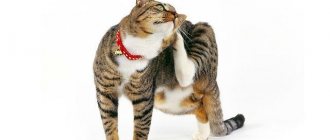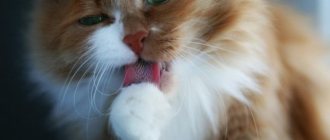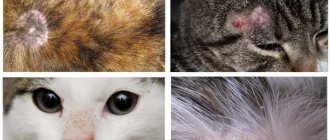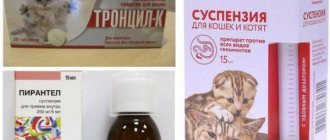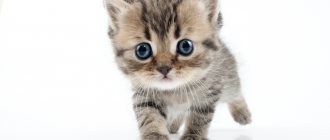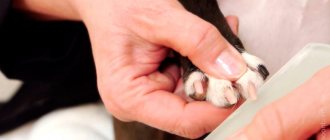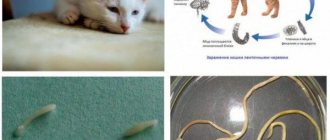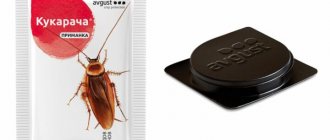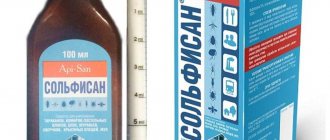The saying “Curiosity killed the cat” was not in vain. Cats are naturally curious. They will smell, taste and explore things that are new to them.
Although cats generally stay away from fleas and other parasite defenses, they are not exempt from it. Even if you've followed the manufacturer's recommendations to apply the product to the back of your neck, they will always find a way to lick it off.
They may bend their neck to reach far back, reach with their tongue or paw at the area and then lick their paws. Anything they did to feed their curious feline mind.
Toxicity of flea and tick medications
Flea preventatives usually contain pyrethrins and pyrethroids. These are typically insecticides used against fleas and ticks on pets.
Pyrethrin is obtained from the Chrysanthemum cinerariafolium plant. Although they appear to be all-natural, they contain a powerful mixture of six chemicals that are toxic to insects.
They are not only used to control fleas and ticks, but also other pests such as mosquitoes, moths, ants, etc. This pest control compound works by actively targeting the nervous system of insects.
On the other hand, a pyrethroid is similar to pyrethrin. Derived from the same plant, but are synthetic, which makes them more durable.
© shutterstock
Other types of flea products contain organophosphates. This insecticide works by damaging enzymes in the body that are critical to controlling nerve signals.
These products are tested to be safe and effective when used correctly. They also pose a risk of toxicity and other unwanted health effects if used incorrectly.
And while we also try to be responsible pet owners, we can't control when our cats get curious and lick off the flea solution.
How to prevent poisoning?
It is easier and cheaper to prevent any disease than to later deal with the consequences and waste a lot of money on treatment and rehabilitation measures. What to do for this:
- First of all, follow the manufacturer's instructions. Set the drug taking into account the weight of the animal. For cats, there is a solution in the form of “Dana Ultra” drops, which are produced in a transparent pipette and sold in individual packaging in a dosage for cats from 4 kg and cats up to 4 kg, which allows you to accurately determine the amount of the drug and avoid undesirable consequences;
- Apply drops to places inaccessible to the cat’s licking, namely in the withers area, spreading the fur and placing the pipette directly against the skin;
- If several animals are subject to treatment, then it is necessary to isolate them from each other until the droplets dry completely. If you need to protect your pets from ectoparasites, you can use flea collars. One of the most suitable solutions in this case can be considered the Dana Ultra collar, since due to optimally selected active ingredients, it is highly effective and safe, and also completely eliminates the entry of active ingredients into the cat’s gastrointestinal tract.
The life and health of a pet is, first of all, the responsibility of the owner. Only by choosing the optimal solutions and following the manufacturer’s instructions can you avoid unwanted consequences and protect your cat from dangers.
The effect of treating fleas if the drops are licked
Pyrethrins and pyrethroids, although plant-based, are toxic to felines. One pyrethroid includes allethrin, cypermethrin, deltamethrin, fenvalerate, fluvalinate, permethrin, phenothrin, tetramethrin and etofenprox.
This may cause an unwanted reaction that will affect the cat's nervous system. It reversibly increases sodium conductance in nerve axons, resulting in repetitive nerve discharges.
These reactions occur more often in cats than in dogs due to higher sensitivity. Most lumps at increased risk are those who are very young, old, sick or weakened.
Cats' reactions to pyrethrins and pyrethroids may worsen if they are cold.
Symptoms and types of flea poisoning
Signs of flea and tick drop poisoning in cats may appear 1 to 12 hours after application. They may also vary according to the type of medication.
Cats, as previously mentioned, are particularly sensitive to pyrethroids. When (accidentally) treated with potent permethrin-containing products intended for dogs, they consequently develop muscle tremors, incoordination, seizures, hyperthermia, or worse, death within a few hours if toxicity is not treated.
Products containing phenothrin may also cause similar but less severe clinical effects. Many of these products have been discontinued because they cause such adverse clinical reactions.
Flea and tick poisoning may also exhibit other symptoms such as:
Allergic reactions:
- Hives
- Cluster
- Itching
- Extreme sensitivity
- Shock
- Respiratory distress
- Death (worst case)
Idiosyncratic reactions:
- Mimics toxic reactions at much lower doses
Mild reactions:
- Excessive salivation
- Paw clicking
- Ear twitching
- Mild depression
- Vomit
- Diarrhea
Moderate to severe reaction:
- Prolonged vomiting
- Diarrhea
- Depression
- Inconsistency
- Muscle tremors (totally different from paw flapping or ear twitching)
Other symptoms you may notice include difficulty breathing, small pupils, weakness or falling, and drooling.
Be especially careful with organophosphate treatments for fleas and ticks, as their toxicity can be fatal, depending on the ingredients and the dose to which the feline is exposed.
What to do in case of poisoning
If a cat has ingested flea drops, then consulting a veterinarian is the first thing to do in this situation. If this is not possible, you should use the following recommendations.
- Rice water will help relieve your cat's condition when poisoned. To prepare it, take 1.5 tbsp. l. Cereals, pour 0.5 liters of water and cook over low heat for 40 minutes. After which the broth is cooled and filtered.
- You can use the drug Smecta. The cat should be given a solution prepared in the ratio: half the contents of the bag per 20 ml of water.
- Activated carbon will help remove toxins from the body. The tablets are dissolved in water and poured into the cat’s oral cavity from a syringe (1 tablet per 1 kg of weight). Enterosgel also has a similar effect.
- No-shpu or Baralgin (½ tablet) can be used as an anesthetic medication.
- Vetelact is used to restore intestinal microflora. In addition, you need to drink plenty of fluids, but it is better to limit your intake of fatty and salty foods.
- Residues of the insecticidal preparation should be washed off from the cat's fur.
Poisoning from antiparasitic drops is a very real situation that can happen to any pet. At such a moment, it is important not to get confused, but you shouldn’t treat it with disdain either. Only timely and correctly selected treatment will help alleviate and restore the pet’s condition. You should also be aware that your cat may be allergic to fleas.
Causes of poisoning with flea and tick medications in cats
Cats, which have less efficient metabolic pathways, are more prone to insecticide poisoning than dogs when they lick a flea drop. Unfortunately, their extensive grooming habits and their long hair, which retains large amounts of topical products, further exacerbates the disastrous situation.
They are also more likely to do so when they have an abnormally low body temperature, such as after a bath, anesthesia, or sedation.
© shutterstock
Main brands of cat collars
Which flea collar to buy for cats is a personal matter for each owner
But it is worth paying attention to the following nuances. When choosing a manufacturer, first of all, you should pay attention to how much the anti-flea collar costs.
As a general rule, a product that is too cheap cannot be of high quality and effective. And in favor of products made in Germany and the USA is the fact that if production standards are violated, the manufacturing plant faces heavy fines, so products from these countries comply with all established standards.
According to reviews from experienced veterinarians and cat lovers, the following types, out of many on the market, are considered high-quality products:
- Hartz: American made product that works effectively even when wet. Hartz repels and destroys blood-sucking pests. There are practically no adverse reactions to the product in animals;
- Bolfo: has a long shelf life, justifying the fairly high cost. High quality and waterproof;
- Beaphar: one of the most effective and safe preventatives. There are products for small kittens. Beafar belongs to the family of natural collars;
- Bars and Doctor Zoo: effective and relatively safe products made in Russia. The disadvantages include a large number of fakes that are unsafe for cats.
Carefully choose a flea accessory for cats to protect your pet from the invasion of unpleasant parasites and not cause additional harm to him before buying it.
To make the right choice, it is important to know and understand how a flea collar works. Fleas, lice eaters, ticks - there are many small pests that cause harm to pets and their owners, but in the modern world everything has been done to get rid of them quickly, simply and safely
The right anti-flea collar is an excellent means of preventing the appearance of unpleasant roommates. The main thing is to start acting on time.
Diagnostics
If your cat has been poisoned by flea control products (flea drops have come off), contact your veterinarian.
And while waiting for the appointment, most recommend immediately washing your cat with warm water and a mild detergent. Be sure to pat them dry and keep them warm. You wouldn't want to lower their temperature.
At the clinic, your veterinarian can perform a thorough physical examination of your animal. He will review the cat's history of symptoms and possible incidents that may have led to the condition.
Infectious skin diseases
Ringworm is a skin disease accompanied by:
- the formation of a small rash;
- damage to fur and claws.
This disease can occur due to a viral infection or reduced immunity of the animal.
There are the following factors that contribute to the development of lichen in pets living at home:
- walking outside without supervision;
- treatment with immunosuppressants;
- malnutrition;
- parasite infection;
- malignant formations.
The most common causes of ringworm in cats are those caused by fungal infections. There are several types of lichen:
- Ringworm, which is based on fungal diseases. This type is easily transmitted to humans, especially to young children. Fungal spores remain viable for 5-10 years because they are resistant to environmental influences.
- Versicolor or pityriasis versicolor, which is a dangerous disease. The cause of its occurrence is a yeast-like fungus, which under certain conditions transforms into a pathogenic form.
- A shingles or pink appearance that appears when immunity is reduced and is of an allergic nature.
- Eczema or tinea versicolor manifests itself in animals as an allergic reaction to a specific irritant and is not transmitted through contact with humans or other animals. Allergies can be caused by exposure to household chemicals, a malfunction within the body, or stress.
All types of lichen in cats have common symptoms:
- hair loss;
- inflammation of the skin accompanied by peeling;
- change in pigmentation;
- severe scabies.
If you suspect lichen, the cat should be isolated immediately. A glazed balcony, loggia or separate room is suitable for this; you need to make sure that the room is warm. After this, you need to contact a veterinarian to establish through diagnostics the cause of the cat’s itching and methods of treating it.
To prevent such diseases from occurring in cats, it is recommended to periodically vaccinate them for preventive purposes.
Skin diseases are the most common problems causing problems for cats and their owners. Most often, this affects pets that occasionally walk outside.
Diseases caused by bacterial infections occur in two forms, such as:
- dry, accompanied by the formation of dry scaly plates and crusts;
- wet, expressed in the appearance of ulcers and blisters filled with exudate.
Cats with hypersensitive skin are at risk of developing eczema. The reasons for its occurrence may be different:
- skin damage due to prolonged friction from contact with any object (collars, harnesses, etc.), due to burns and parasite bites;
- consequences of internal disorders in the body (neuropathy): hormonal imbalance, diabetes.
With eczema, the animal's skin develops rashes and blisters. There is a constant itching sensation in the affected areas (including the neck). To treat this disease, various ointments, soothing powders, and antibiotics are used.
A common disease among cats is acne (blackheads). Its cause may be the animal's low immunity, being under stress or improper care. This bacterial infection has a detrimental effect on the sebaceous glands. As a rule, its presence is indicated by rashes in the form of ulcers throughout the animal’s body. The largest accumulation of acne occurs on the cat's chin, neck and lip area.
At the beginning of treatment, the skin is first treated with antiseptic detergents.
Treatment, life and management
Reactions such as increased salivation, paw twitching, and ear twitching are usually mild and go away on their own. In cats, you can reduce the intensity of the spray with a warm brush and towel.
If symptoms progress to tremors and body weakness, your cat may require hospitalization where they will be stabilized with fluid support, seizure control, and temperature management.
Once the cat's condition has stabilized, hypersalivation may recur for several days. This is because a cat cleans its entire body with its mouth and paws. They may cause this due to flea residue, but there is nothing to worry about.
Danger of droplets - theory
Effective flea treatments for cats contain insecticides. The substances belong to a low hazard class and, when used correctly, do not affect the well-being of the animal. However, the instructions below indicate that if there is an individual intolerance to the components, a number of side effects occur:
- loss of appetite, refusal to eat;
- excited state or apathy;
- drowsiness, insomnia;
- diarrhea;
- vomit;
- trembling throughout the body;
- convulsions;
- skin irritation;
- lacrimation;
- increased salivation;
- dilated pupils;
- violation of orientation in space.
It is this large list of side effects that makes you worry if your cat has taken flea drops. The whole difficulty lies in the fact that you can find out about the presence of individual intolerance in cats only after using antiparasitic drops.
Prevention
Fleas can be a frustrating situation for our cats. Using flea medication is usually a last resort. However, with such risks, this may make the situation even easier.
Luckily, the ASPCA Animal Poison Control Center (APCC) has a guide to help us use flea medications correctly.
- Make it a habit to read all label information before administering medications to your pet.
- Do not use more than one medication on your pet unless directed by your veterinarian.
- Make sure your veterinarian is your primary source of information. Don't perform uneducated procedures on your pets.
- The Internet may recommend some steps that may not be entirely safe. For example, tea tree oil and garlic cause serious and potentially life-threatening symptoms in pets.
- Always make sure you double check everything before using flea medications.
- If you live in a multi-pet household and flea season has forced you to treat all the pets, take the time to treat each one. You don't want to confuse one medicine with another.
Most flea poisonings caused by a cat licking the drops usually result from failure to follow label directions. Always monitor publicly available materials provided by treatment manufacturers regarding the product's oral toxicity.
Where and how do insects get into an apartment?
Knowing the characteristics of your residence and habitat, it is easy to guess where fleas come from in an apartment, even if there are no animals. Unfortunately, the absence of furry pets does not eliminate the possibility of infestation of the premises with parasites. Besides your four-legged friends who are often outdoors, fleas can appear in two other ways.
- "Neighbourly." Neighbors may have animals and excellent conditions for fleas. Parasites easily cross thresholds, are transferred from clothing to clothing, and travel on shoes. Simple friendly communication with neighbors on the landing can turn into an invasion of parasites.
- Damp basement. In the basements of apartment buildings, as a rule, it is warm and cozy for the reproduction of various living creatures, in particular rats. Fleas live on animals and they also thrive in such conditions. From the basement, through small cracks in the floor, insects can visit the residents of the lower floors. Owners living under the roof are also not protected from insects; parasites can “move” from the attic.
It is necessary to act immediately to prevent the proliferation of fleas. Insects lay hundreds of eggs, from which numerous parasites emerge. Even if all the adult individuals are exterminated, larvae and eggs may remain in the apartment, due to which the house will have to be treated again.
